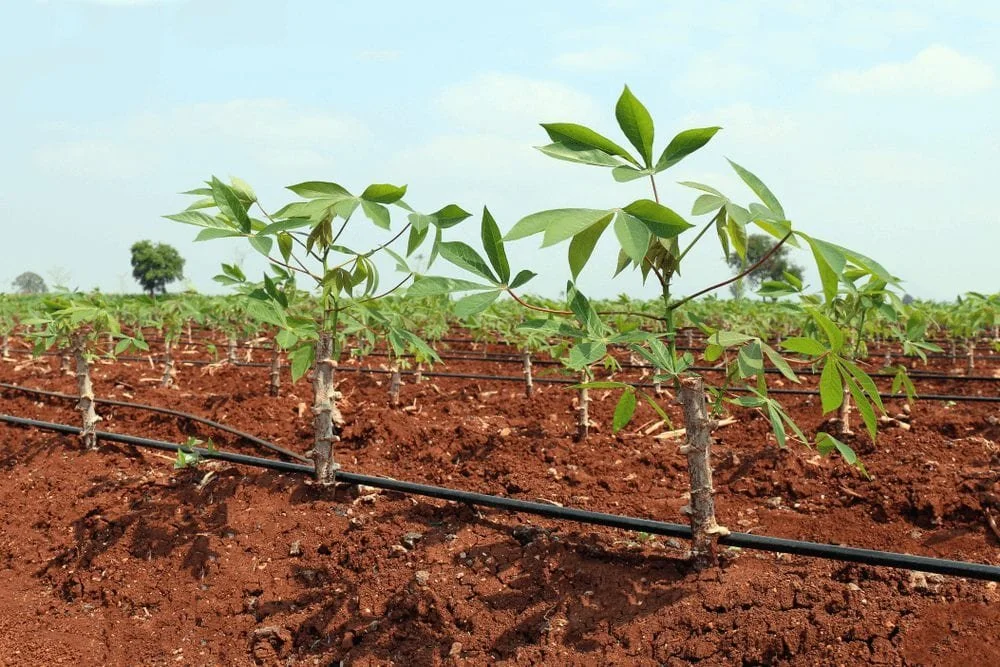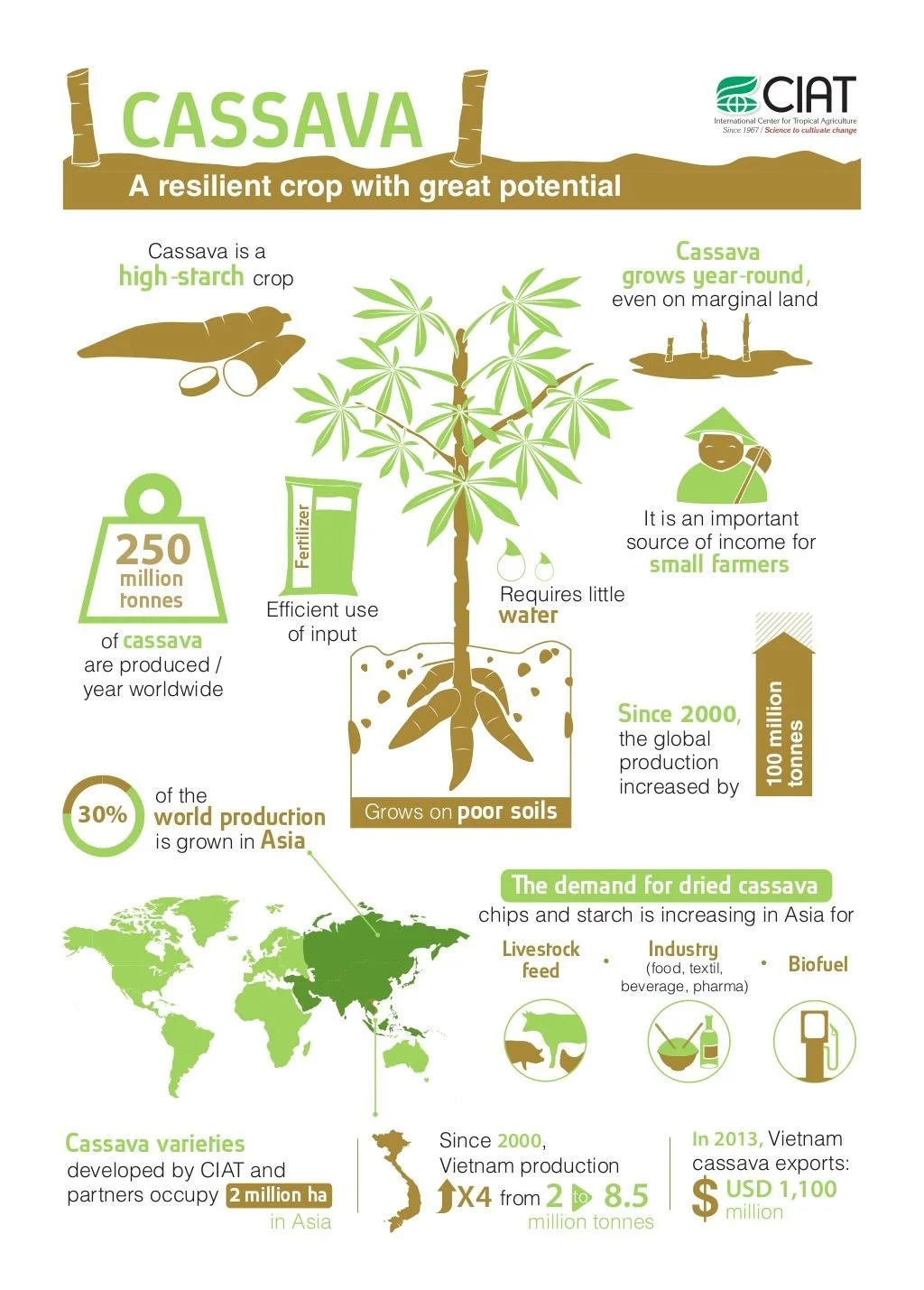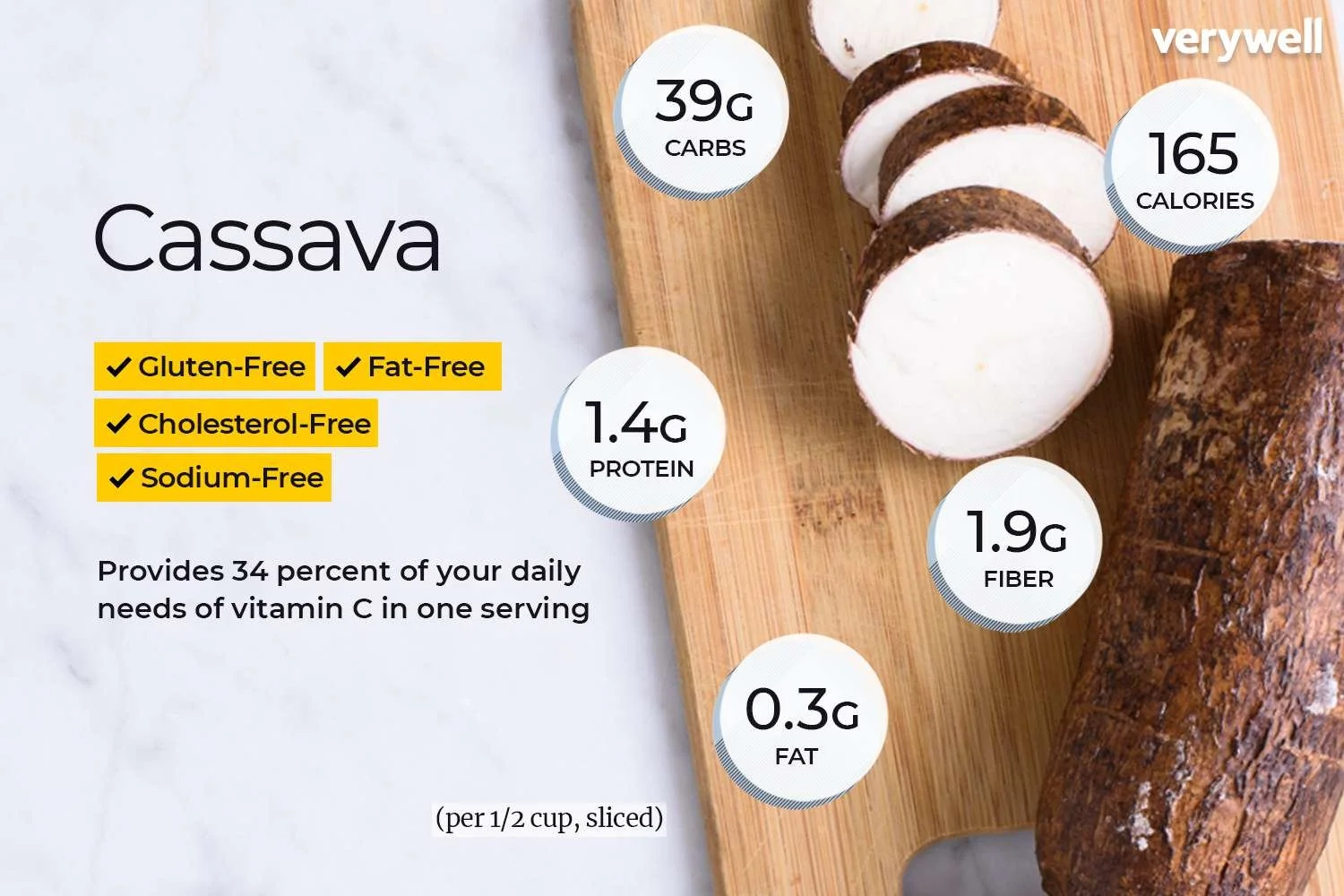Yuca
Uses of Cassava/Yuca
As stated earlier, cassava has many uses, and it cut across several production industries. Cassava has gained wide usage in industries for the production of paper, ethanol, pharmaceuticals, biofuels, starch, and flour. Nowadays, cassava flour is being encouraged to be used in the production of bread, doughnuts, and other confectioneries.
Not only is the root of cassava important for the production of food, but its leaves can also be used as a vegetable for soup or as feed for sheep, goats, snails, and cattle.
Cassava/Yuca Farming Process
Selection of a Suitable Land Cultivation of Cassava
Land Preparation for Planting Cassava
Planting the Cassava
Weeding of Cassava Farm
Fertilization of Cassava Plantation
Harvesting the Cassava Tubers
Step 1: Selection of a Suitable Land Cultivation of Cassava
The first step in the cassava farming process is the selection of suitable land for cultivation. Cassava can be grown on most soils; however, the best soils are sandy clay loam that is well-drained without a fluctuating water table. Cassava is a tropical crop, as a result, the most favorable growing conditions for cassava farming are in humid-warm climates. The best temperature for growing cassava is between 25 – 29°C and precipitations of between 1000 – 1500 mm.
Step 2: Land Preparation for Planting Cassava
After successfully choosing a suitable site for cultivating your cassava, clear all bushes in the area immediately. The reason for clearing the bushes around the area is to allow more sunlight to the soil. Also, it helps to remove weeds and undergrowth which might otherwise compete with the growth of your cassava. By clearing the bush in the selected area using the burning method, you will destroy disease vectors and other parasites present in the soil.
In addition, the layer of ashes left after burning may help to increase the quantity of potassium salt in the soil available to the growing plants. Some people have argued that bush burning may also deplete soil nutrients. They claim that as you are burning the bush, some essential nutrients will find their way out of the soil in the form of gases. The best way to avoid depleting the soil through bush burning is to rotate the method of clearing the vegetation in your cassava farm with other methods.
As you are preparing the soil for cassava farming, mix the soil with dried animal manure or compost to increase soil fertility. Your ridges or mounds should be at least 0.75m-1m apart. However, this depends on the availability of planting materials and the fertility of the soil. The cassava plant spacing and population also vary, depending on whether cassava is planted solely or in association with other crops.
Some experiments have shown ridging to produce relatively lower yields than flat cultivation, but the work of weeding and harvesting is greatly reduced by ridge planting. For farmers in the rain forest and derived savanna zones where soils are prone to water-logging, planting on ridges or mounds is a general practice.
Step 3: Planting the Cassava
In the planting stage of the cassava farming process, the first thing to do is to carefully select a cassava variety that you will grow. Select varieties with multiple pest and disease resistance, high and stable root yields, and acceptable quality. The optimal cassava plant spacing is 1 meter by 1 meter apart along each row and across ridges or mounds. The remaining space between the cassava plants can be used you grow vegetables, maize, legumes, and other plants.
Inter-cropping cassava with other crops reduces the danger of loss caused by unfavorable weather and pests by spreading the risk across several plants with different vulnerabilities. Ensure you are planting cassava stem cuttings you cut from plants that are up to 8 – 18 months old. Use a sharp machete or cutlass to cut the stem.
Take care not to bruise the buds or otherwise damage the stem. The cuttings should be about 20-25 cm in length with 5 or more nodes. Cuttings from the base of the stalk are better planting materials than those from the top in terms of germination and plant yield.
How to Plant Cassava
There are three methods of planting cassava
Horizontal method of planting cassava
Vertical method of planting cassava
The inclined method of planting cassava
Horizontal planting
Plant cuttings are buried 5 – 10 cm below the soil surface in dry climates and when mechanical planting is used.
Cuttings planted horizontally produce multiple stems and more tuberous roots but they are relatively smaller in size.
However, in loamy and rich soils the multiple stems and roots are at an advantage resulting in high yields.
Vertical planting
Many people use this method during rainy days so that cuttings will not rot if the soil is constantly wet.
In contrast, under low rainfall conditions, vertical planting may result in dehydration of the cuttings.
Inclined planting
Cuttings are inclined at 45o in semi-rainy areas, leaving 2-3 nodes above ground level. The inclination of the stem and roots provides leverage which makes harvesting easier than in the other orientations. Plant early in the morning or late afternoons when the sun is cool to prevent excess heat from heating the crop. Replace all cuttings which did not bud after two weeks of planting.
Step 4: Weeding of Cassava Farm
An ancient Chinese philosopher once said, “Plan for what is difficult while it is easy, do what is great while it is small.” With this quote in mind; Thorough land preparation is key to reduced weeding activity. Plant cassava cuttings early enough before weeds start emerging. Cassava requires approximately 3 months of weed-free condition for optimum yield.
Use a contact and/or pre-emergent herbicide to control weeds for the first three months of growth. Apply post-emergence herbicides as soon as weeds begin to emerge after the pre-emergence herbicide treatment. Weed with hoes or adapted cutlasses 3 or more times depending on the type of weed.
On a large scale, use tractor-operated weeders.
Step 5: Fertilization of Cassava Plantation
The kinds and quantities of fertilizers required by a cassava crop depend on the nature of the soil. You may not need to fertilize the farmland immediately after clearing vegetation. If you have grown cassava on the land for several years in succession or in a rotation, the soil nutrients deplete. Therefore, fertilizer application becomes necessary.
Most farmers use different kinds of organic manures, such as cattle dung or chicken droppings to improve soil fertility. Remains of leguminous plants, incorporated into the ground, also improve soil nutrients. To further enhance the growth and overall yield of your farm, you will need to apply fertilizers. Use a good fertilizer to improve soil nutrients.
Test a sample of your soil to determine the fertilizer types and application rates that will be suitable for your farmland. A fertilizer that is rich in potassium salt, favors the formation of starch in cassava. Nitrogen and phosphorus, on the other hand, are essential for growth.
If the soil contains large quantities of absorbed nitrogen, the result will be like the fig tree in the Holy Bible that Jesus Christ saw on his way to Jericho, “having a heavy development of vegetative growth without a corresponding increase in root production.” Apply the first dose of NPK fertilizer, in the ratio as determined by the soil test, 4-8 weeks after planting. Place fertilizers 15cm to 45cm from the base of the stem in drill holes – 10cm to 15cm deep.
Placement of fertilizers in drill holes reduces fertilizer loss through runoff water.
A second dose of Fertilization of plants 16 weeks after planting significantly increases the yield of roots and enhances tuber bulking. For effective absorption of fertilizer nutrients into the soil, do not apply fertilizer when the soil is dry.
Step 6: Harvesting the Cassava Tubers
How long it takes for cassava to reach maturity differs from one variety to another. Cassava becomes mature for harvesting 8 – 18 months after planting. However, the exact time for harvesting cassava depends on other factors such as the environment and the agricultural practices adopted.
How to harvest cassava roots
The best way to harvest cassava is to do it manually. The stems of the cassava plant are first cut by hand, machete or machine. When you are cutting the stems, leave a small portion of the stem at the base of the plant to serve as a handle to pull the storage root up.
Don’t damage the stems when you are cutting them.
Keep the stems you will plant next season.
Stack them together in small portions as you move.
Uproot the cassava immediately by pulling the plant from the soil while holding the small portion of stem you left when cutting the stem. If the soil is too hard, use a hoe to dig out the part stuck in the soil so that the tubers will not break in the soil. Cut off the tubers from the stem.
Be careful not to bruise the roots as you are harvesting otherwise, they will deteriorate very rapidly. It is better to harvest roots only when you have a ready market to sell your cassava tubers to prevent them from decaying and forming post-harvest waste.
You can process the cassava tuber immediately after harvesting. Do not leave the tubers without processing them because they will begin to deteriorate within about 48 hours, and then begin to rot and decay.
Cassava Diseases and Pests
Pests and diseases are one of the major reasons why many agribusinesses fail.nThey increase the loss of cassava which should have contributed to your overall profit.
The major pests and diseases of cassava are:
Thrips and Mites
African cassava mosaic virus
Cassava mealybug
Insects
Herbivorous Animals
Thrips and Mites
You can control thrips and mites using miticides and Insect Growth Regulators.
These pests are prevalent during dry periods and decrease as rainfall increases.
African cassava mosaic virus
The African cassava mosaic virus causes the leaves of the cassava plant to wither.
When such withering occurs, it limits the growth of the root.
The best control measure is to plant resistant varieties.
Cassava mealybug
This causes a reduction in internode length of cassava stem.
This pest can cause up to 80% crop loss, which is extremely detrimental to the production of subsistence farmers.
Insects
Some insects affect the plant directly. For instance, locusts feed on cassava leaves.
Ants and termites eat up cassava stems after planting, or later in the season; therefore destroying whole plants.
Others affect the plant indirectly by the transferring virus into the plant.
Use insecticides and Insect Growth Regulators to control insects.
Herbivorous Animals
Grass-cutters, pigs, goats, and sheep frequently expose and eat up roots in the soil.
The damage to the roots can provide an entry for the microorganisms that cause roots to rot.
To prevent this, keep the farm and its surroundings weed-free.
Use traps and poisoned grains to kill them or wire mesh fencing to prevent them from entering your field.




